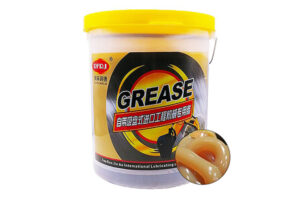The Ultimate Guide to Ball Bearing Grease: How to Choose and Apply the Best Lubricant
 As an essential component of any mechanical system, ball bearings play a crucial role in ensuring smooth and efficient operation. Whether you are working with industrial machinery, automotive systems, or household appliances, choosing the right ball bearing grease is critical to maintaining optimal performance and prolonging the lifespan of your equipment.
As an essential component of any mechanical system, ball bearings play a crucial role in ensuring smooth and efficient operation. Whether you are working with industrial machinery, automotive systems, or household appliances, choosing the right ball bearing grease is critical to maintaining optimal performance and prolonging the lifespan of your equipment.
In this post, we will explore the world of ball bearing grease, covering everything from the basics of lubrication to the different types of grease available and how to apply them effectively. So, let’s dive in!
What is Ball Bearing Grease?
Ball bearing grease is a lubricant designed specifically for use in ball bearings, which are used to reduce friction and wear between two moving parts. The main function of grease is to create a barrier between the two surfaces, preventing metal-to-metal contact and reducing the amount of heat and wear generated during operation.
Grease is typically made up of a base oil, thickener, and various additives to enhance its performance and properties. The base oil is the primary lubricating agent, while the thickener acts as a sponge to hold the oil in place and maintain its consistency over time. Additives can be used to improve the grease’s ability to withstand high temperatures, resist water, and protect against corrosion.
Types of Ball Bearing Grease
There are several types of ball bearing grease available, each with its own unique properties and advantages. Let’s take a closer look at some of the most common types:
1. Lithium Grease
Lithium grease is one of the most popular types of ball bearing grease, thanks to its versatility and affordability. It is made from a lithium soap base and can be used in a wide range of applications, from automotive to industrial to household use. Lithium grease is known for its excellent water resistance and high-temperature performance.
2. Synthetic Grease
Synthetic grease is a high-performance lubricant that is designed to withstand extreme temperatures and heavy loads. It is made from synthetic base oils and can be used in a wide range of applications, from aerospace to automotive to marine use. Synthetic grease is known for its excellent resistance to heat, water, and oxidation.
3. Calcium Sulfonate Grease
Calcium sulfonate grease is a premium lubricant that is designed for use in heavy-duty applications. It is made from a calcium sulfonate base and offers excellent rust and corrosion protection, along with high-temperature performance. Calcium sulfonate grease is ideal for use in harsh environments, such as mining and construction.
How to Apply Ball Bearing Grease
Now that we’ve covered the different types of ball bearing grease available, let’s talk about how to apply it effectively. Here are some tips to help you get the most out of your lubricant:
1. Clean the Bearing
Before applying grease, it’s essential to clean the bearing thoroughly to remove any dirt or debris that may have accumulated. Use a clean rag or a specialized bearing cleaner to remove any contaminants.
2. Apply the Grease
Once the bearing is clean, it’s time to apply the grease. Use a grease gun to apply the lubricant evenly to the bearing’s surface. Be sure to use the right amount of grease, as over-greasing can lead to excess heat and wear.
3. Reassemble the Bearing
After applying the grease, reassemble the bearing and test it to ensure it is functioning correctly. If you notice any issues, such as excess heat or noise, it may be necessary to reapply the grease or replace the bearing altogether.
Conclusion
In conclusion, ball bearing grease is an essential component of any mechanical system, and choosing the right lubricant is critical to maintaining optimal performance and extending equipment life. By understanding the different types of grease available and how to apply them effectively, you can ensure that your bearings are operating smoothly and efficiently for years to come.




